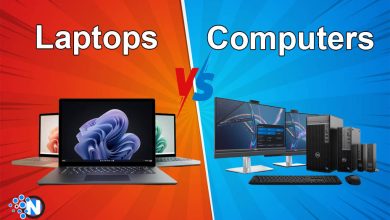NVMe vs SSD – Key Differences and How to Choose the Right One

The evolution of storage devices has been remarkable as the transition from traditional hard drives to high speed solid state drives (SSDs) and now to Non Volatile Memory Express (NVMe) drives. For many people, NVMe vs SSD is a continuous battle as they cannot decide which one to choose.
I have been also in the confusion for a long. But soon, I figured out the key differences between them and determined which could match my requirements. In this blog post, I have shared the same along with some tips that can help you how to choose the right one between them.
What Are SSDs?
SSD, short for Solid State Drive, is storage devices that utilize the power of flash memory to store data and files. They are quite advanced to traditional hard disk drives (HDDs) as they have no moving parts. Thus, SSDs are faster and more durable along with delivering efficient performance.
How SSDs Work?
SSDs rely on NAND flash memory which stores data electronically instead of magnetically. They use a controller to manage data storage and retrieval. SSDs are connected to a computer through various interfaces. These include SATA, PCIe, and M.2.
Key Advantages of SSDs
- Speed: SSDs are significantly faster than HDDs.
- Durability: With no moving parts, SSDs are less vulnerable to physical damage.
- Energy Efficiency: SSDs consume less power which makes them ideal for laptops and portable devices.
- Compact Size: SSDs are smaller and lighter than HDDs. Hence, it allows for more design flexibility in devices.
Types of SSDs
- SATA SSDs: They use the SATA interface. Although it is slower, yet widely compatible.
- PCIe SSDs: PCIe SSDs use the PCIe interface. They offer higher speed and performance.
- M.2 SSDs: It is a form factor rather than an interface to support both SATA and PCIe.
Pros and Cons of SSDs
What Is NVMe?
NVMe stands for Non-Volatile Memory Express (NVMe). It is a storage protocol that is designed specifically for SSDs. It basically uses the PCIe interface to ensure faster data transfer speed and lower latency. This makes it widely different from the traditional interfaces like the one available in the SATA. Hence, you can use it in building a custom PC.
How NVMe Works?
NVMe takes advantage of parallelism in modern CPUs by allowing multiple commands to be processed simultaneously. It connects directly to the motherboard through PCIe lanes. As a result, it bypasses the bottlenecks of older interfaces.
Key Advantages of NVMe
- Unmatched Speed: NVMe drives can reach speeds of up to 7,000 MB/s or more.
- Low Latency: With direct access to the PCIe bus, NVMe reduces latency drastically.
- Scalability: NVMe can handle more commands per queue compared to SATA.
- Energy Efficiency: Despite higher speeds, NVMe drives are optimized for efficient power usage. Hence, they are a good for gaming PCs.
Types of NVMe Drives
- PCIe NVMe: These are the standard NVMe drives that use the PCIe interface.
- M.2 NVMe: Compact NVMe drives in the M.2 form factor.
- U.2 NVMe: Enterprise grade drives that use the U.2 interface.
Pros and Cons of NVMe
NVMe vs SSD Key Differences
| Factors | NVMe | SSD |
|---|---|---|
| Speed | Can achieve speeds exceeding 7,000 MB/s. | Typically offer speeds of up to 550 MB/s. |
| Latency | Lower latency thanks to direct PCIe connection. | Higher latency due to the SATA interface |
| Interface | Use the PCIe interface for higher performance. | Use the older SATA interface |
| Form Factor | Predominantly available in M.2 and U.2 form factors | Typically available in 2.5-inch and M.2 form factors |
| Price | Higher cost due to superior performance. | More affordable and widely available. |
| Use Cases | Best for professional workloads, gaming enthusiasts, and high performance tasks like video editing and 3D rendering | Ideal for general computing, office tasks, and gaming |
How to Choose Between SSD and NVMe
In the under section, I have mentioned some points that will let you know how to decide between NVMe vs SSD so that you can get optimal advantages.
- Assess Your Needs: Firstly, you should consider the tasks you perform daily. For basic computing, a SATA SSD is sufficient. If you want to perform high speed data processing, NVMe is the better choice.
- Budget Constraints: If you have a limited budget, opt for SATA SSDs, because they are more affordable. If performance is a priority, you should invest in NVMe drives.
- Compatibility: Next, you should ensure that your motherboard supports the desired drive type. Older systems may not support NVMe without an adapter.
- Future Proofing: If you are building a new system or upgrading for long term use, NVMe drives offer better scalability and performance.
- Storage Capacity: Next, you should decide how much storage you need. Both SSDs and NVMe drives come in various capacities, but high capacity NVMe drives can be expensive.
Final Thoughts
These are the details about the NVMe vs SSD key differences and how to choose between them. Both of them come with their own set of features and attributes that make them resonate with the requirements of different audiences. While SSDs are good for everyday computing, NVMe can assist you in carrying out high end tasks.
You should consider some factors such as your requirements and needs along with compatibility. Older systems are not widely compatible with NVMe. Thus, SSDs can be the ultimate choice for you in this situation.
Frequently Asked Questions
1 – Can I use NVMe and SSD together?
Yes, many systems allow you to use both NVMe and SATA SSDs simultaneously. This setup can provide a balance of speed and storage capacity.
2 – Do I need NVMe for gaming?
While NVMe can improve load times, it is not mandatory for gaming. A SATA SSD is often sufficient for most games.
3 – Is NVMe worth the extra cost?
If your tasks require high speed data transfer and low latency, NVMe is worth the investment. For basic tasks, SATA SSDs offer better value.
4 – How do I know if my motherboard supports NVMe?
Check your motherboard’s specifications or manual. Look for M.2 slots with NVMe support or PCIe lanes.




